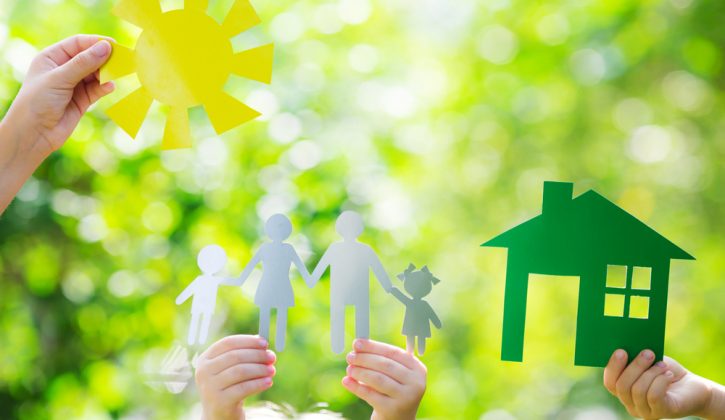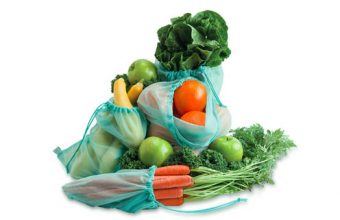It takes just two weeks to form a new habit (or break a bad one), so why not make a commitment to implement a greener routine that can save money, make a lasting impact on the environment and positively affect the health of your family.
So here’s my challenge to you–commit to making four small and simple changes which can be incorporated into your family’s daily routine that will make a lasting impact on the environment and the health of everyone involved. Greener doesn’t have to cost you more time or money, so get your family involved. Empower them to be a part of the change with these four easy steps and make sustainable living the new ‘normal’ in your home.
Step 1: The Litterless Lunch
As a mom, when I recognized the impact of prepared, packaged and processed foods on our bodies and the environment, I knew that I had to make a change. By swapping out disposable packaging for reusable lunch carriers and avoiding prepared foods, you’ll be saving money, the environment and improving the health of your child. Here’s how:
- Reusable lunch carrier: The SnackTAXI is a great option in place of the plastic or paper bags often used to carry lunches.
- Reusable containers: Stainless steel, glass or an alternative wrap like the Wrap-N-Mat can be used in place of plastic wrap or foil.
- Stainless steel or glass drink bottle: Opt for stainless steel, glass or my favourite, the Otterbottle, instead of single-use cans or juice boxes.
Step 2: Watch How You Wash
Keep in mind that while you are making an investment in a healthy and more sustainable lunch, it’s important to investigate what you are using to wash and keep your lunch containers clean. Many dish and laundry soaps contain petrochemicals (derived directly from oil). So wherever possible, look to wash your lunch bags and containers with plant-derived, non-toxic dish soap. I make sure the following on are my shopping list:
- A natural dish soap: Plant-derived dish soap like Free & Clear Natural Dish Liquid can effectively clean the grease, grime and dirt left in your child’s stainless steel and glass containers while making sure there’s no dangerous residue left to contaminate lunch.
- Natural all-purpose spray: I’m constantly cleaning my countertops of sticky fingerprints but want to make sure those same counters are safe to place food on, so I opt for a plant-based cleaner like Free & Clear All Purpose Kitchen Spray which lets me do both.
- A plant-based concentrated laundry detergent: At the end of the week when it comes time to wash lunch bags, cloth napkins and the kid’s clothes, I choose a highly concentrated detergent like Seventh Generation’s 4X formula which let’s me get more loads per bottle and is safe to use on my family.
Step 3: Choose a Fun, Fit and Sustainable Route to School
Getting to school has an enormous impact on our environment as well as our health. With an estimated 1.6 million children in Canada (26% per cent of children) considered overweight or obese, it’s a wonder more parents don’t look at making healthy transportation options a part of their daily lives. Here’s a few ways to work health, cost and environmentally-friendly options into your getting to school routine:
- Start a walking school bus with children or families in the area. Walking is the greenest way to travel and does the least damage to the environment. Find ways to either walk with or ensure your children join forces with other families who travel the same path to school.
- Make the investment in two and four wheeled methods of transportation such as a bike, new scooter or skateboard to make the trip to school fun and fit.
- Create a carpool. Find out which days work best for the drivers, and create a schedule and a system for notifying other members of the pool if someone isn’t riding on a particular day.
Step 4: Rebrand Responsibility
It’s important to engage your kids in the school preparation and planning process to help set them up for success. This means that kids must be involved in organizing their snacks and lunches for the week, they should help clean and select their clothing and should also be in charge of creating their weekly schedules (including chores, sports practices, music lessons, etc). Most importantly though, they need to understand why it is important that they choose environmentally-friendly products.
After having many conversations with my own children about the environment and what it means to do our part, I recognized that a big part of teaching stewardship is ingraining responsibility into the fabric of your household.
Overall, it’s never too late to set a new standard of what you and your family can do to help care for the environment.
Tagged under: green,environmentally friendly,green living
Category: green-living






